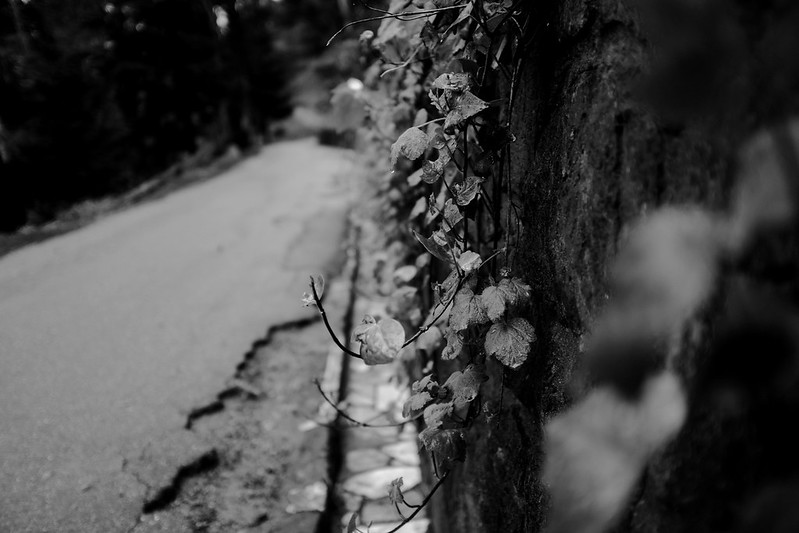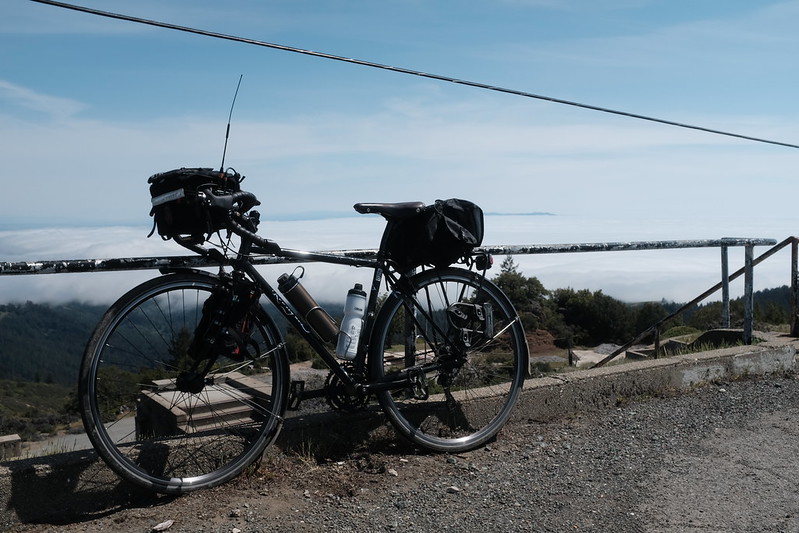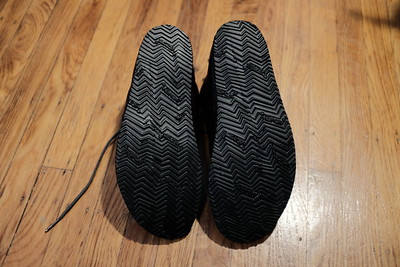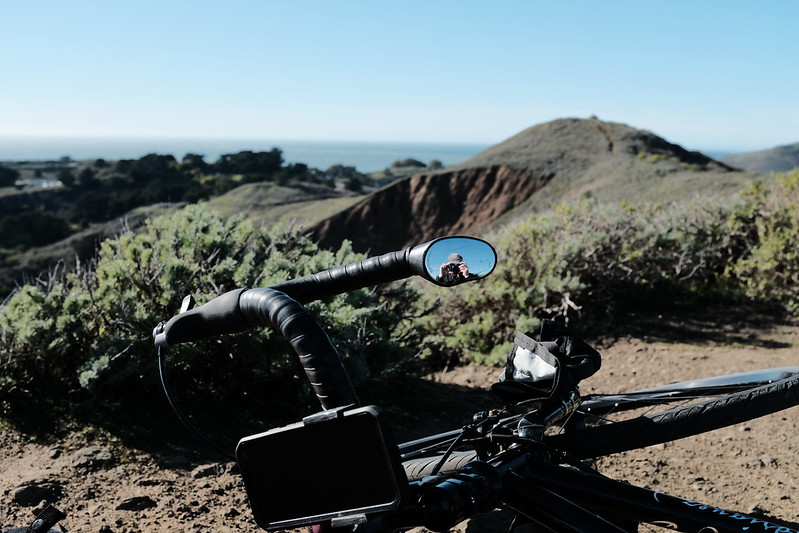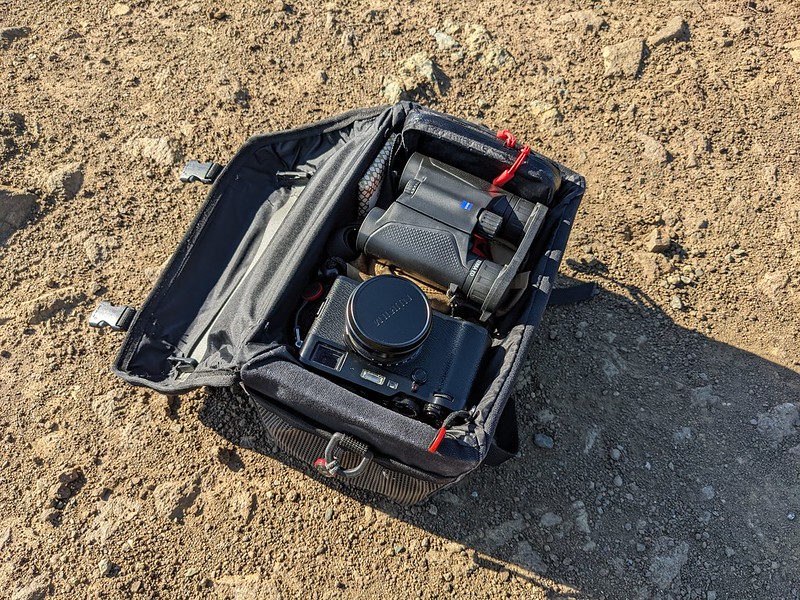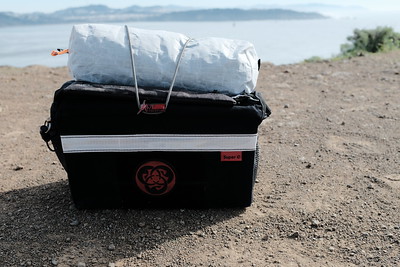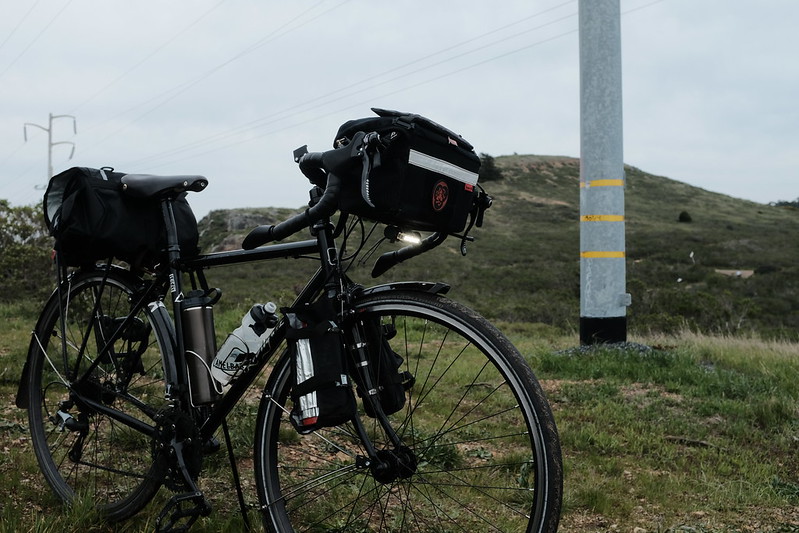On Wild Rags
The wild rag or neckerchief is an eminently functional tool. Worn around the neck, it protects from ultraviolet radiation. When wetted, it provides evaporative cooling. When dry, it can be used as a towel. It offers warmth when the mercury drops, and protection from the wind. It can be used as a furoshiki to bundle items together, or be tied into an impromptu bag. It may be fashioned into a sling, or used to tie a splint. The devolution of the wild rag into something as dumb as the modern necktie is the greatest crime perpetuated by Fashion since the invention of the high heel.
I bought my first wild rag at a used clothing store in 2004, though it wasn’t till seeing a suspiciously similar looking one as part of Viggo Mortensen’s costume in Appaloosa a few years later that I started to think of it as practical field equipment. By 2009 it was a standard part of my backpacking accouterment. Some time later the wild rag graduated to being just normal clothing, particularly when it is unusually hot or cold out. (The original rag that I bought used 19 years ago remains in the rotation.)
The standard size for a wild rag is 36” x 36”. This is larger than a pocket snot rag, which is typically 22” x 22”. It is large enough to be wrapped twice around the neck, with the tails still long enough to be easily knotted in the front. The wild rag will also usually be offered in a larger 44” x 44” size, but I find this too large to be worn.
The most common way to secure the wild rag around the neck is via a square knot. Being a gentleman of taste and culture, I sometimes tie mine in a half windsor. The so-called buckaroo square knot is another option, but I think it is pretty goofy looking. The only buckaroo I want in my life is Banzai.
A slide can be used in place of a knot. I have a couple of slides which are simply elongated ovals of leather with a snap in them. They work, and look nice, but are not as secure as a good knot when flying down a mountain on the bike. One could also use a woggle, but this is associated with people who march around in brown shirts, which I am allergic to.
The proper material for a wild rag is silk. People will try to sell you polyester rags, or blends of silk and cotton. Both are less functional than real, natural silk. The range of weather conditions in which silk remains comfortable is unusually wide. Avoid all imitations.
Silk rags are primarily offered in either Crepe de Chine or Charmeuse. Charmeuse looks and feels incredibly luxurious. It is very soft. One side is shiny and the other matte. But it is also warmer and slightly heavier than Crepe de Chine. Crepe de Chine has a rougher, pebble-like texture to it. It is lighter weight (by about 10 grams for the finished scarf) and better for warm weather, but still useful in the cold. Jacquard, where a pattern is sewn in with a lighter colored thread, is usually applied to Crepe de Chine fabric. Start out with one Crepe de Chine rag, then get one in Charmeuse. Next buy a few more of both, because this is an addiction.
Hems should be serged. Many sellers of silk wild rags offer the same patterns. They’re probably all buying the same bolts of fabric from the same suppliers. When you choose a seller, what you are really buying is the hem. A silk wild rag is not just a piece of fashion, but a durable, long-lasting tool. Serged hems will provide a longer service life than a hem which is simply rolled and stitched. You may save a little on the price with a lesser hem, but you will be disappointed in the long run. I wasted money before learning this lesson.
The best places that I have found to purchase a wild rag are Cowboy Images and Wild West Rag Co. Both apply serged hems to real silk. I’ve bought from both in the past and will buy from both again in the future.
Alternatives like shemaghs and neck tubes have their place, but my preference sits strongly with the silk wild rag.
APRS becomes a more useful expedition messaging service with the addition of SMS and email gateways.
These gateways bypass the traditional APRS messaging requirement that both parties be online at the same time. With the SMS Gateway and Email Gateway, I can send a message to someone back in the world, and the message will arrive on their computing device as normal SMS or email. Critically, both gateways store messages for 24 hours and allow receivers to request unacknowledged messages be resent. This means that someone can reply to my SMS or email at any time, even when my radio is off. I just have to turn on my radio at least once per day and instruct both gateways to send me any new messages.
I’m interacting with both gateways directly from my Yaesu VX-8DR but this thread on the Expedition Portal forums provides a good introduction of using them via APRSdroid.
APRS gateways also exist for weather reports, WhatsApp messaging, and requesting the nearest repeaters.
Softstar Chukka Resole
The Softstar Shoes Hawthorne Chukka is one of my favorite shoes for everyday wear. I bought a pair in “Hickory” (brown) in 2016, and liked them enough that I went back and bought a second pair in “Onyx” (black) one month later. The chukkas feature a stitched leather midsole with a glued outsole, which means they are resolable. The outsole they ship with is an 8mm Vibram Super Newflex (Vibram catalog number 8868), which Softstar calls their “Geo” sole.
This past February I decided it was time to resole the brown pair. They had begun to feel a little slippery on wet concrete, and when I flipped them over to look at the bottom I could see that I had worn the rubber away completely in some spots.
When I visited my neighborhood cobbler, he did not have any sheets of Vibram Super Newflex. He did have a sheet of Vibram Newflex (Vibram catalog number 8870). I went with that.
Newflex is denser and a bit stiffer than Super Newflex, with a classic herringbone tread pattern that feels like it ought to be better for dirt. Newflex is what Softstar uses on their Dash and Primal running shoes (they call this one “Omniflex”) and is what Luna uses to build their classic Leadville Sandal, so the material has strong trail running credentials.
The resoled chukkas are probably a few grams heavier than they would be with Super Newflex rubber, and perhaps ever-so-slightly stiffer, but when wearing them I do not notice a difference in either department. With a fresh coat of Obenauf’s oil I think the refreshed shoe looks great.
I liked the Newflex sole enough that I went back to the cobbler 6 weeks later and had him resole my black chukkas. These weren’t as worn down as my brown pair, but were still worn smooth on the balls of the foot (there is a pattern here).
Resoled leather footwear is better than new. You get fresh tread, but keep your well-worn leather that has already molded to your foot. I’m looking forward to wearing both these soles down and revisiting the cobbler in another 7 years.
Evaluating the 16340 Battery
16340 batteries are rechargeable batteries in the same form factor as CR123As. Last year I purchased 4 different 16340s to try out:
Two of these have integrated Micro USB ports for charging. That’s a nice feature, but the current iteration of my electronic support package contains a (now discontinued) Olight UC Universal Magnetic USB Charger (the Foursevens USB Flex Charger appears identical in every way but the logo), so I can just as easily charge the other two batteries when out and about.
Over the past few months I cycled through all of these 16340s in the Elzetta Alpha. The Alpha, carried on a Pocket Shield, is still my EDC light. Each battery performed in a manner than seemed identical to me, despite their slightly different specs. They worked great. Until they didn’t.
As a CR123A is consumed, the light output diminishes. This provides ample visual warning that it is time to change the battery. All of the 16340s caused the Elzetta to put out a steady amount of light right until the battery died. There is no visual warning that it is time to charge the battery. You just go to switch the light on and nothing happens. Or it switches on and you get great light for 10 seconds, and then it dies.
The life cycle of the 16340 only works if they are put on a fixed charging schedule that is built around maximum likely use. I don’t want to mess with that for my EDC light, so I’ve moved the Elzetta Alpha back to disposable CR123A batteries.
I’d be happy to save money by using the rechargeable 16340 batteries in an application that was less mission critical. But for all the devices I currently have that take a battery in that form factor, the CR123A is still superior. (Eneloops are still great, however.)
The Carradice Super C Handlebar Bag and its Modifications
I bought my Carradice Super C Handlebar Bag sometime in 2010 or 2011. I think I learned about it while reading one of the blogs of Emily Chappell as she was preparing to leave her London courier job to ride around the world.
There’s no shortage of bicycle handlebar bags out there. Most of them have more intriguing designs than the Super C. The Super C is a simple box. The sides and bottom are rigid (with corrugated plastic). Inside, it has two open top pockets on either side and a zippered pocket near the back. On the outside, either side has mesh pockets. These do not expand much. I move my shoulder mounted OC to one of these when I am not wearing a backpack, but otherwise these external side pockets are mostly useless.
The Super C has two killer features that I think make it superior to the vast majority of its competition.
First, it mounts with a Rixen & Kaul KLICKFix bracket. This piece of Teutonic wizardry allows the bag to be attached or detached from the bike in about two seconds. Most other bags utilize straps of some sort, which are fine if you’re out in the back of beyond, but fiddly for frequent donning and doffing. In an urban environment, I want to be able to quickly pop the bag off my bike and throw the strap over my shoulder whenever I park. When disembarking a ferry or train, I want to pop the bag back on the bike immediately so that I’m not causing people to stack up behind me and wait while I’m routing straps. When I’m walking around with the bag over my shoulder, I don’t want to worry that I may discover a loose strap fell out when I get back to the bike. The KLICKFix addresses all of these concerns. When the bag is on the bike, it is held securely. I’ve had the Super C on plenty of miles on bumpy gravel with my skinny 32mm tires, and never had an issue. I’m sure there is some maximum recommended weight limit for the bracket, but I’ve never thought about it. As long as you aren’t loading the Super C with lead, it’ll probably be fine.
Second, the Super C has a detachable light bracket on the bottom. Either because of their height or how much real estate they take up on the bars, most handlebar bags (including the Super C) are not compatible with lights mounted on the handlebar. Most bags do not provide any alternative solutions for a headlight, instead expecting the user to workaround the problem with some sort of fork mount solution or an accessory cockpit bar mounted above the handlebars. Those alternatives work, but I find them annoying. The Super C provides a simple bracket that pops into the bottom of the bag. Anything that can mount to a handlebar can mount to the bracket. If you don’t need the bracket, you can twist it off and leave it at home.
The rest of the Super C is pretty basic. I’ve made a few modifications that make it more useful to me.
A D-ring on either side of the bag allows a shoulder strap to be mounted. I keep Peak Design Anchor attachments on mine, to which I usually keep attached the original model of the Peak Design Leash. When I’m out on a weekend ride, I’ll often have a camera or binoculars in the bag. Both of those have Peak Design Anchors on them. Keeping Anchors on the bag as well allow me to have a single strap I can move around to whatever thing needs it.
The lid of the Super C sports a removable map case. It attaches via two snaps near the handlebar-side of the bag, routes under a piece of webbing on the opposite side of the lid, and then folds back over itself. This was a key feature in the pre-pocket-computer-age when I bought the bag, but these days I rarely attach the map case. Instead, I used my awl to add what I will optimistically call bartacks on either side of the webbing, just a few millimeters from the edge. This provides a channel which allows me to slip in a Duraflex Siamese Slik Clip on either side. That, in turn, allows me to attach a simple zippered pouch on the top. I appreciate having something like this for small items I may want while underway.
On the underside of the lid, I added a similar length of webbing with clips on either side. This allows me to run another pouch inside, which won’t get buried in the main compartment. I frequently clip my first aid kit in here.
The lid of the Super C closes with two side release buckles. These are very inconvenient to open or close when underway. You can do it if you’re motivated, but it takes concentration of effort. This shortcoming is where the Super C differs from most randonneuring bags on the market, which usually close with a piece of shock cord that gets pulled back and looped around the stem. Fortunately this is easy to add. I routed shock cord through the webbing that the buckles attach to, and ran an ITW GTSP Cordlock through either end. This works great to secure the lid, and makes it easy to get into the bag midflight.
I left the shock cord much longer than it needs to be to wrap around my stem. The front of my bag has a JK/47 Cyberpunk pin, secured via locking pin backs. If I close the lid with the buckles rather than the cord, I can use the cordlock to extend the length of the loop enough to run underneath this pin. That gives me a “V” of shock cord on the top of the bag which I can use for extra carrying capacity. I use this to carry lightweight but bulky things, such as a puffy jacket in an UltraLiteSacks Zippered Cube Ditty Bag.
The front of my Super C also features a panel of loop velcro. Since the bag has a hard liner, I glued it on instead of sewing it. I think I used Fabri-Tac. Originally I thought I’d use this to mount my Orfos Pro light, but later I decided that using shock cord to attach the light to the Super C’s light bracket was a better option. Now the loop panel is just used for fun morale patches – mine usually sports the emblem from Ghost Dog: The Way of the Samurai.
Carradice products are handmade. They include a tag where the maker writes their name. My Super C was made by Kelly.
